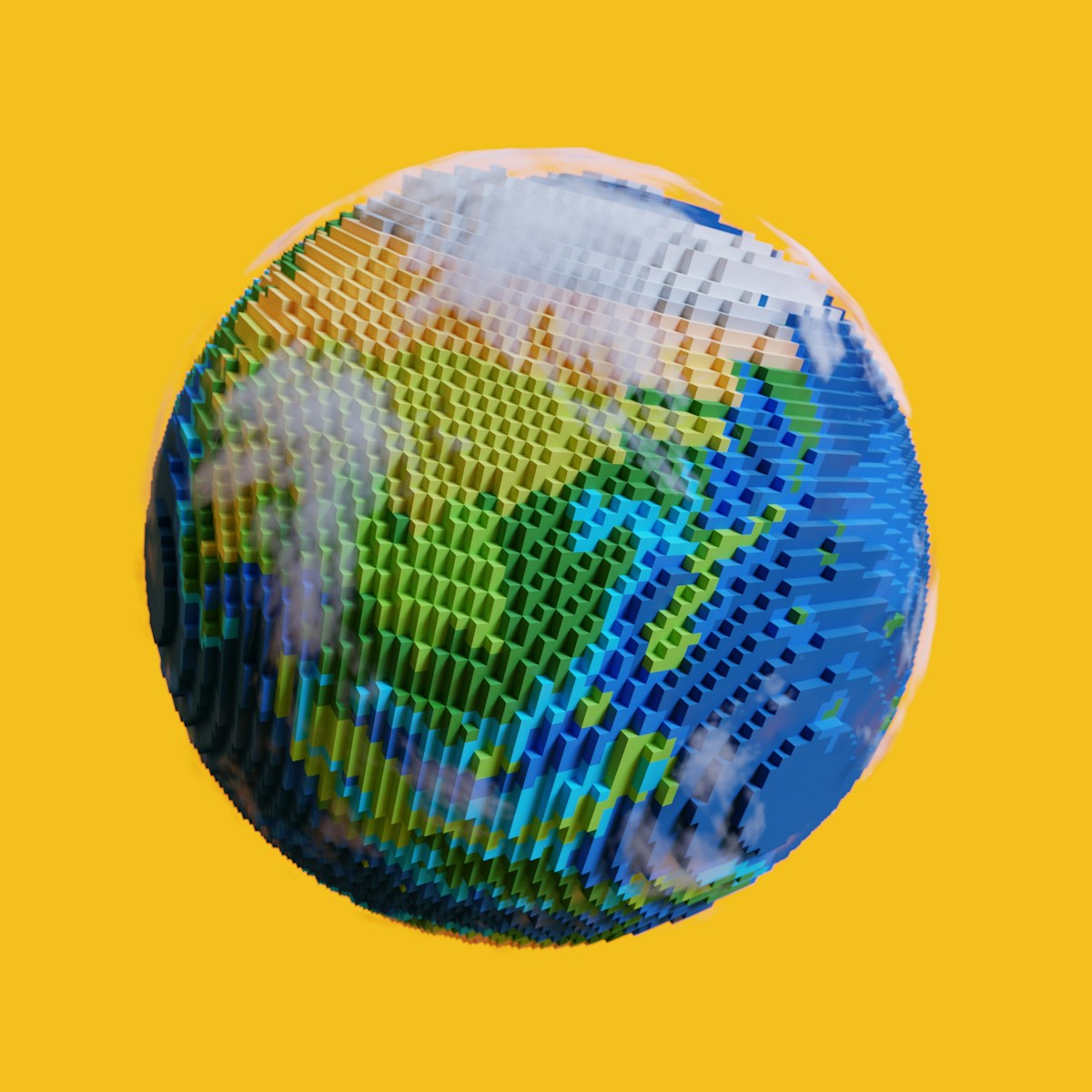Discover The Power Of Vector Art: Essential Tips
Discover The Power Of Vector Art: Essential Tips

Vector art has become integral to modern design, offering a versatile and scalable approach to creating stunning visuals. Designers and artists must understand the intricacies of vector art, its benefits, and the process of creating vector artwork.
Understanding Vector Art
Vector art uses geometric primitives such as points, lines, curves, and shapes to create artwork that can be scaled infinitely without losing quality. The unique characteristic makes vector graphics ideal for various design and digital media applications.
Benefits Of Vector Art
The advantages of vector art are numerous. It allows for crisp, sharp images of any size, making it perfect for logo design and illustrations. Additionally, vector graphics are editable and easily manipulated, offering flexibility in design creation.
Creating Vector Artwork
Creating vector artwork involves using specialized software such as Adobe Illustrator or CorelDRAW to draw shapes and lines that can be combined to create intricate designs. The process often involves precision and attention to detail to achieve the desired visual outcome.
Now that we have covered the basics of understanding vector art, let's delve deeper into what it is and how it differs from other forms of digital artwork.
What Is Vector Art?
Vector art refers to digital images created using vector graphics. Unlike raster graphics comprising pixels, vector graphics use mathematical equations to define lines, shapes, and colors. It allows for infinite scalability without loss of quality.
It is a digital artwork created using vector graphic software such as Adobe Illustrator or CorelDRAW. It consists of paths defined by a start and end point and other points, curves, and angles to define the shape. The format allows for easy manipulation and editing without losing image quality.
Advantages Of Vector Graphics
1) Scalability - Vector graphics can be resized without losing quality, making them ideal for logos and illustrations.
2) Editable - The ability to easily edit individual elements makes vector art versatile and adaptable.
3) File Size - Vector files are typically smaller than raster images, making them easier to share and store.
Comparison With Raster Graphics
Raster graphics is made up of pixels, which can result in a loss of quality when resized. In contrast, vector graphics maintain their sharpness regardless of size. While raster images are better suited for photographs and complex color gradients, vector art is ideal for logos, icons, and illustrations.
How Do Vector Graphics Work?
Vector graphics use mathematical equations to create shapes and lines, allowing for scalable and resolution-independent images. The method ensures that the graphics maintain clarity and quality when resized, making them ideal for various design projects.
Vector Art Vs. Raster Art

When it comes to graphic design, understanding the key differences between vector art and raster art is crucial. Vector art is created using mathematical equations and geometric shapes, allowing scalability without losing quality. On the other hand, raster art is made up of pixels and can lose quality when resized.
Key Differences
1) Vector art is resolution-independent, meaning it can be scaled infinitely without losing quality
2) Raster art is resolution-dependent and can lose quality when enlarged
3) Vector graphics are created using mathematical equations and geometric shapes
4) Raster graphics are made up of pixels and are better suited for detailed, high-resolution images
When To Use Vector Graphics
Knowing when to use vector graphics is essential for effective graphic design. Vector graphics are best used for logos, illustrations, typography, and any artwork that requires scalability without losing quality. They are also ideal for printing on physical products or materials.
Common Misconceptions
Some common things about vector graphics need to be addressed. One misconception is that vector artwork can achieve a different level of detail than raster images, which is untrue, given the right skills and tools. Another misconception is that vector graphics are only suitable for simple designs but can also be used for complex and intricate artwork.
Understanding the key differences between vector art and raster art, knowing when to use vector graphics, and dispelling common misconceptions about vector artwork can help designers decide which type of graphic format to use in their projects.
How To Create Vector Art
Vector art is a versatile and powerful digital artwork that offers endless possibilities for creativity. Creating vector art requires specialized tools and a good understanding of best practices for graphic design. Here's how you can create stunning vector artwork and make the most out of vector graphics:
Tools For Creating Vector Art
When creating vector art, having the right tools is essential. Some popular software options for creating vector art include Adobe Illustrator, CorelDRAW, and Inkscape. These tools offer a wide range of features and functionalities that enable artists to create intricate and detailed vector graphics easily.
Best Practices For Vector Graphic Design
Following best practices for vector graphic design is important to create high-quality vector artwork. It includes using simple shapes and lines to build complex designs, working with layers to organize elements effectively, and utilizing color palettes strategically to enhance visual impact.
Tips For Working With Vector Graphics
Working with vector graphics requires a different approach than raster images. It's important to understand how vector graphics work to make the most out of vector art. Some tips for working with vector graphics include mastering the pen tool for precise drawing, utilizing anchor points effectively, and experimenting with different stroke and fill options.
Following these guidelines and leveraging the power of vector art tools can unleash your creativity and produce visually striking artwork that stands out across various mediums.
The Power Of Vector Art

Vector art has revolutionized how we design for the web, branding, and print media. Its scalability and crisp lines make it an ideal choice for various applications.
Impact On Web Design
1) Vector art allows for responsive and scalable designs, ensuring that websites look great on any device
2) It enables faster loading times due to smaller file sizes, enhancing user experience
3) The flexibility of vector graphics allows for dynamic animations and interactive elements on websites
Applications In Branding
1) Vector artwork is essential for creating logos and brand identity elements that can be scaled without losing quality
2) It ensures consistency across different marketing materials, such as business cards, signage, and digital assets
3) The versatility of vector graphics allows for easy adaptation to different branding needs and platforms
Importance For Print Media
1) Vector art is crucial in print media as it guarantees high-quality output regardless of size
2) It enables the creation of sharp and clear images in brochures, posters, and other printed materials
3) Printers prefer vector graphics for their precision and ability to maintain quality at any scale
Harnessing Vector Art With Strikingly
Vector art has revolutionized the way we design and showcase visual content online. When creating stunning websites, vector graphics are crucial in delivering high-quality and scalable artwork. With Strikingly's user-friendly platform, integrating vector art into your website is a seamless process that can elevate your web design.
Integrating Vector Art Into Strikingly
One of the key advantages of using vector art on Strikingly websites is the ability to scale images without losing quality. Incorporating vector graphics into your site can ensure your artwork looks crisp and professional across different screen sizes and resolutions. It creates a visually appealing user experience that leaves a lasting impression on visitors.
Optimizing Vector Graphics For Web
Optimizing your artwork for web display is important when working with vector graphics on Strikingly. It ensures that your vector files are appropriately compressed to minimize load times while maintaining image quality. Following best practices for web optimization can guarantee that your vector art looks stunning and loads quickly on all devices.
Showcasing Vector Artwork On Strikingly Websites
With Strikingly's intuitive interface, showcasing vector artwork becomes effortless. Whether featuring illustrations, logos, or infographics, you can easily create visually captivating sections on your website to highlight your vector art pieces. It allows you to effectively communicate your brand identity and message through engaging visuals that resonate with your audience.
Leveraging the power of vector art within the Strikingly platform, you can create a visually stunning website that captivates visitors and leaves a lasting impression.
How Do You Add Vector Art To A Strikingly Website?
Adding vector art to a Strikingly website involves a few steps, and the specific process may depend on the features and options available in the Strikingly editor when you're working on your website. Here's a general guide on adding vector art to a Strikingly website:
- Log in to Your Strikingly Account - Go to the Strikingly website and log in to your account.
- Access Your Website Editor - Navigate to the website you want to edit.
- Add a New Section or Edit an Existing Section - Depending on where you want to add vector art, you may need to add a new section or edit an existing one. Click the "Edit" button for the section where you want to include vector art.

Image taken from Strikingly
- Add an Image Element - Look for an option to add an image element. Click on the corresponding button or drag the image element to the section.

Image taken from Strikingly
- Upload or Choose Your Vector Art - You'll likely be prompted to upload an image file. Upload your vector art file (common formats include SVG for vector graphics).

Image taken from Strikingly
- Adjust Size and Position - After uploading the vector art, you can adjust its size and position within the section. Use these controls to achieve the desired layout.

Image taken from Strikingly
- Customization - Depending on the Strikingly editor, you may have additional customization options. Explore settings to make your vector art fit seamlessly into your website design.

Image taken from Strikingly
- Save Your Changes - Once you are satisfied with the placement and appearance of your vector art, be sure to save your changes.
- Preview and Publish - Before publishing your changes, preview your website to ensure the vector art looks as expected. Once you're satisfied, go ahead and publish your website.
Remember that the specific steps and options might vary based on updates to the Strikingly platform after my last knowledge update. If significant changes or new features have been introduced since then, refer to the latest Strikingly documentation or contact Strikingly support for the most accurate and up-to-date information.
Conclusion
Recognizing the power of vector art is essential for designers seeking to enhance visual content. Designers can achieve a significant visual impact by leveraging vector graphics, ensuring high-quality and consistent visuals across diverse platforms. Embracing vector artwork opens creative possibilities and guarantees exceptional quality, making every project stand out with precision and impact.
